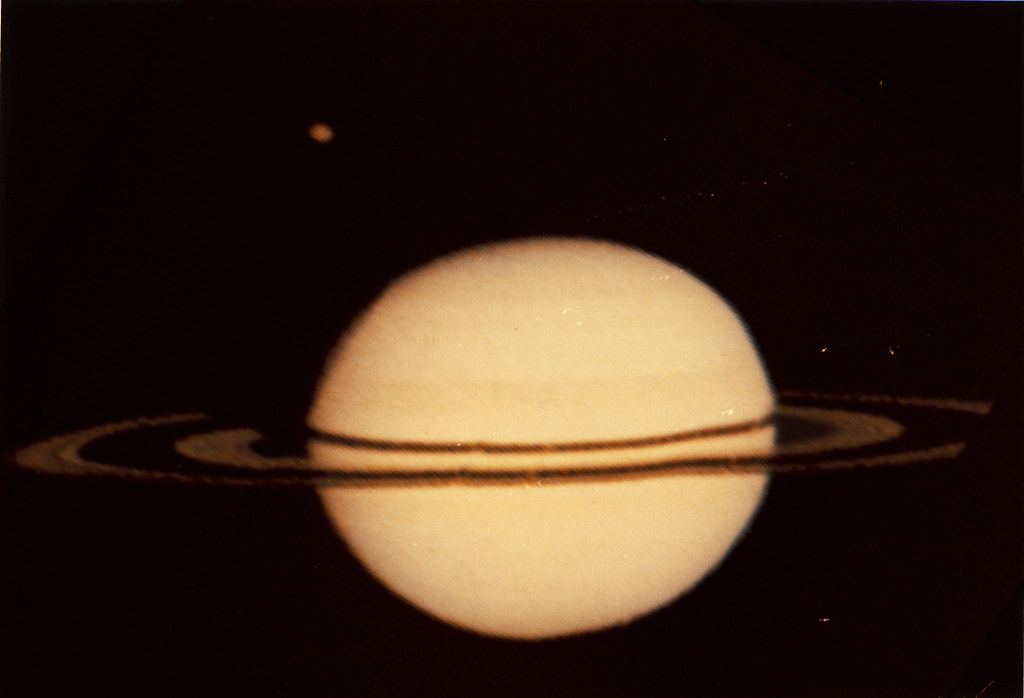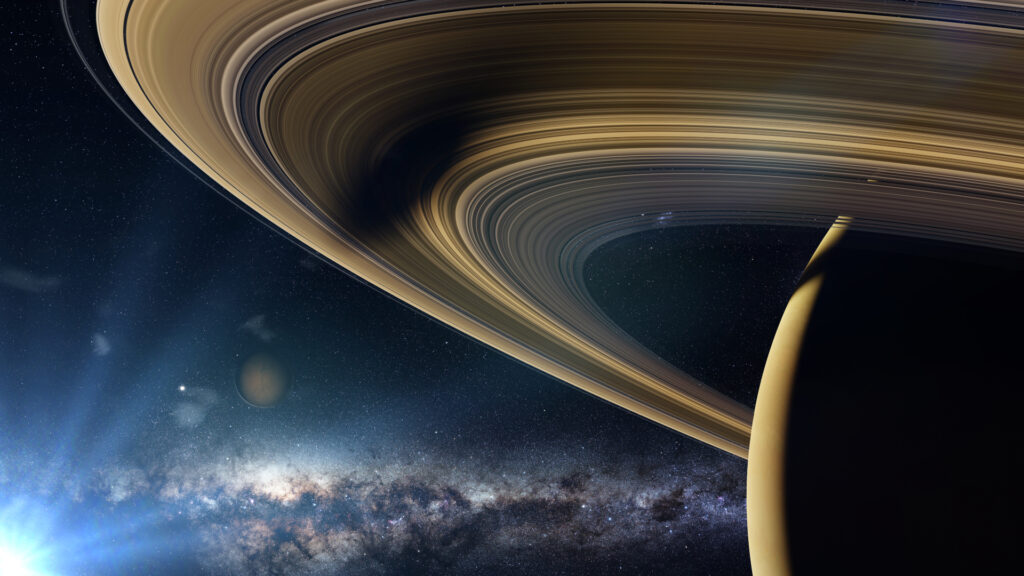Table of Contents
A Celestial Elder in the Eyes of Ancient Civilizations
For thousands of years, civilizations observed the slow journey of a distant celestial body across the night sky, attributing it with deep spiritual and mythological significance. The Babylonians meticulously recorded its movements, associating it with their god Ninurta, a deity linked to wisdom and war. Greek and Roman astronomers, influenced by Babylonian knowledge, connected it to their agricultural cycles, naming it after Saturn, the Roman god of time and harvest. Its sluggish orbit gave it an aura of mystery, reinforcing its status as the outermost known planet before telescopes revealed the true vastness of the cosmos.
Across cultures, this distant planet symbolized fate, patience, and cosmic order. In Hindu traditions, it was called “Shani,” believed to influence karma and discipline, shaping astrological beliefs that persist today. The slowest of the classical planets, it became a marker of endurance and transformation, inspiring interpretations that varied between fear and reverence. Unlike the bright, faster-moving planets, its methodical path across the sky suggested the passage of time itself, influencing everything from astrology to ancient calendars. Even before telescopic advancements, Saturn stood as a reminder of the limits of human perception and the vast, uncharted universe beyond.
Revealing a Celestial Mystery Through Telescopic Eyes
The invention of the telescope revolutionized humanity’s understanding of the cosmos, bringing distant planets into sharper focus. In 1610, Galileo Galilei turned his rudimentary telescope toward a bright, far-off world and noticed an unusual shape, describing it as having “ears” or a three-part form. His instrument lacked the resolution to discern the true nature of what he saw, sparking debates among astronomers. Some speculated it was a cluster of moons, while others believed it was a planet with appendages. It wasn’t until Christiaan Huygens used a more advanced telescope in 1655 that he correctly identified the mysterious structures as the rings of Saturn.
As telescopes improved, astronomers uncovered more secrets about this distant giant. Giovanni Domenico Cassini made some of the most groundbreaking discoveries, including the Cassini Division, a prominent gap separating sections of the planet’s vast rings. His observations also led to the identification of four moons, revealing that this world was not a solitary wanderer but a system teeming with celestial bodies. These findings reshaped our perception of planetary systems, proving that Saturn was more than just a distant dot in the sky—it was a dynamic, complex world with features unlike anything else known at the time.
A Colossal World Born from Chaos
Over 4.5 billion years ago, the young solar system was a chaotic place, filled with swirling clouds of gas and dust left over from the Sun’s formation. Within this turbulent environment, a massive planet began to take shape, pulling in vast amounts of hydrogen and helium. Its immense gravitational pull allowed it to grow into one of the largest planets in the solar system. Rapid rotation caused the planet to bulge at its equator, giving it an oblate shape. Scientists theorize that deep within its thick atmosphere lies a core of heavy elements, possibly composed of iron, nickel, and rock, encased in a layer of metallic hydrogen.
As this gas giant evolved, gravitational forces sculpted its surroundings, influencing the formation of an extraordinary ring system. These rings likely originated from the remnants of a shattered moon or an icy comet torn apart by tidal forces. Unlike the solid surfaces of terrestrial planets, Saturn remains a fluid world, its atmosphere constantly shifting under the influence of high-speed winds and pressure variations. Over billions of years, interactions with its numerous moons have continuously reshaped its rings, creating the striking bands observed today. While its formation is largely understood, ongoing studies seek to unravel the mysteries of its internal structure and magnetic field.

A Delicate Masterpiece of Ice and Dust
Encircling a distant gas giant is one of the most breathtaking structures in the solar system—an immense disk of icy debris stretching over 175,000 miles (282,000 km) yet astonishingly thin. Composed of countless particles ranging in size from tiny specks to house-sized boulders, these rings reflect sunlight, making them visible even from Earth. Scientists have divided the system into several distinct sections, labeled A through G, each with unique characteristics. Some regions contain densely packed ice clusters, while others have gaps, such as the Cassini Division, which separates the two largest rings. Despite their grandeur, these delicate formations are surprisingly thin, measuring only about 30 feet (10 meters) thick.
New research suggests that these rings are much younger than previously thought, possibly forming a mere 100 million years ago. Earlier theories proposed that they were as old as the planet itself, but their relative brightness and composition challenge that idea. Saturn’s immense gravitational pull likely disrupted a passing comet or a former moon, scattering its remnants into orbit. The planet’s many moons continue to sculpt and modify the rings through gravitational interactions, creating shifting patterns and waves. As space dust accumulates and particles collide, the rings are slowly eroding, suggesting that this mesmerizing structure may one day disappear entirely.
A Vast Collection of Unique and Unusual Worlds
Orbiting a distant gas giant is an extraordinary assortment of moons, each with distinct characteristics and histories. The largest, Titan, is the only moon in the solar system with a dense atmosphere, rich in nitrogen and methane. Its surface features rivers, lakes, and seas of liquid hydrocarbons, making it one of the most intriguing locations for studying prebiotic chemistry. Another standout is Enceladus, an ice-covered world that ejects water vapor from its subsurface ocean through powerful geysers. These plumes, detected by space probes, suggest the potential for microbial life beneath its frozen crust, placing this small but active moon among the most promising candidates for astrobiological research.
Beyond these major moons, many smaller satellites contribute to the complexity of this planetary system. Iapetus, with its stark contrast between one dark and one bright hemisphere, continues to puzzle scientists. Mimas, with its massive Herschel Crater, bears an eerie resemblance to the Death Star from Star Wars. Meanwhile, some of the tiniest irregular moons, such as Hyperion and Phoebe, appear more like captured asteroids than natural-born satellites. The gravitational pull of Saturn influences all these moons, shaping their orbits and interactions, while they, in turn, contribute to the planet’s intricate ring system and dynamic celestial environment.

A Turbulent Realm of Supersonic Winds and Alien Storms
Beneath the thick clouds of a distant gas giant, an atmosphere churns with some of the fastest winds in the solar system. Composed primarily of hydrogen and helium, this turbulent environment features jet streams that whip across its surface at speeds reaching 1,100 mph (1,800 km/h), far exceeding Earth’s most powerful hurricanes. Towering storm systems emerge in the upper cloud layers, creating enormous tempests that can last for months or even years. Unlike the more stable weather patterns of terrestrial planets, atmospheric changes here are driven by extreme pressure variations, rapid rotation, and the seasonal shifts that occur due to an elongated 29.5-Earth-year orbit around the Sun.
One of the most enigmatic features of this gas giant’s atmosphere is the enormous hexagonal storm at its north pole. Unlike any other planetary weather system, this six-sided jet stream stretches over 18,000 miles (29,000 km) in diameter and remains remarkably stable despite the surrounding chaotic winds. First captured by the Voyager spacecraft in the 1980s and later studied in greater detail by the Cassini probe, the hexagon’s origins remain a mystery. Scientists theorize that it may be caused by variations in wind speeds at different latitudes. As seasonal changes occur, massive storms and shifting cloud formations continue to reshape the dynamic weather patterns of Saturn.
Revolutionizing Our View of a Distant Giant
The first detailed exploration of a distant ringed planet began with NASA’s Pioneer 11, which flew past in 1979, capturing close-up images that revealed a more complex world than previously imagined. It was soon followed by Voyager 1 and 2, which provided stunning photographs of its vast rings, turbulent atmosphere, and diverse moons. These missions uncovered intricate ring structures and detected evidence of dynamic weather patterns. Scientists were particularly intrigued by the planet’s massive storms and the possibility of liquid methane on one of its moons. However, these early flybys were brief, leaving many questions unanswered about the planet’s composition, atmospheric behavior, and satellite system.
The Cassini-Huygens mission became the most ambitious effort to study this gas giant, transforming knowledge about its intricate system. Arriving in 2004, Cassini spent 13 years orbiting the planet, sending back high-resolution images and detailed data about its atmosphere, magnetic field, and dozens of moons. The Huygens probe made history in 2005 by successfully landing on Titan, providing the first direct observations of a thick, nitrogen-rich atmosphere and surface features resembling river channels. In 2017, Cassini’s “Grand Finale” sent it plunging into Saturn’s atmosphere, ensuring no contamination of its moons while delivering final measurements of the planet’s deep cloud layers.

A Massive Magnetic Barrier Against Cosmic Forces
Surrounding a distant gas giant is an enormous magnetic field that stretches millions of miles into space, forming a protective shield against charged particles from the Sun. Although weaker than Jupiter’s, this magnetosphere is still one of the most powerful in the solar system, influencing the planet’s environment and interactions with its many moons. As solar winds collide with this invisible barrier, energetic particles become trapped, creating breathtaking auroras near the poles. Unlike Earth’s auroras, which shift based on solar activity, these luminous displays remain more stable, hinting at unique magnetic properties that scientists are still working to understand.
The precise mechanics behind this planet’s magnetic field continue to intrigue researchers. Unlike Earth’s tilted magnetic field, which is offset from its rotational axis, Saturn’s field is almost perfectly aligned, an anomaly that defies conventional planetary models. Data from the Cassini mission suggests that the planet’s core may contain metallic hydrogen, a substance capable of generating electric currents strong enough to sustain the field. This discovery provides insights into the behavior of magnetospheres in giant planets and their role in shielding atmospheres from harmful radiation. Understanding these dynamics helps scientists predict space weather and its effects on planetary systems throughout the universe.
A Lost Moon’s Influence on a Giant’s Tilt
A mysterious celestial event may have shaped the evolution of a distant ringed planet, altering its axial tilt and reshaping its surroundings. Scientists propose that a now-vanished moon, named Chrysalis, once orbited the gas giant before succumbing to its immense gravitational pull. As it spiraled too close, tidal forces tore it apart, scattering debris into space. This event may have played a crucial role in shifting the planet’s tilt to its current 26.7-degree angle, a value that puzzled researchers for years. Without this missing moon’s influence, the planet’s axial tilt might have remained much lower, aligning more closely with early formation models.
Beyond influencing the planet’s tilt, the destruction of this lost moon could also explain the origin of its spectacular rings. If Chrysalis disintegrated within the last 100 million years, its icy remnants may have contributed to the material that now encircles Saturn. This theory challenges long-standing assumptions that the rings formed alongside the planet itself. The idea that a single moon’s demise could reshape an entire planetary system highlights the ever-changing nature of celestial mechanics. Further research into this lost moon’s existence may provide deeper insight into how dynamic forces continue to shape the evolution of planets across the universe.
Exploring Alien Worlds for Signs of Life
A new era of space exploration is set to unveil the secrets of distant moons, with upcoming missions focusing on environments that may harbor the building blocks of life. NASA’s Dragonfly mission, scheduled for launch in the 2030s, will send a drone-like rotorcraft to explore Titan, the only moon in the solar system with a dense atmosphere. By studying its methane lakes, icy dunes, and organic-rich chemistry, scientists hope to uncover conditions that resemble those of early Earth. Titan’s thick atmosphere and potential underground liquid water reservoirs make it one of the most promising locations for studying prebiotic chemistry and the possibility of life beyond our planet.
While Titan holds clues to life’s origins, another moon may offer more immediate prospects for extraterrestrial organisms. Enceladus, a small but active world, continuously ejects water vapor through icy geysers, hinting at a vast subsurface ocean beneath its frozen shell. Future probes could fly through these plumes, analyzing their composition for organic molecules or microbial signatures. The potential discovery of life beneath Enceladus’ ice would revolutionize our understanding of habitability in the outer solar system. As missions advance, Saturn remains at the center of scientific efforts to determine whether life can exist beyond Earth’s familiar conditions.

A Cosmic Icon in Fiction and Imagination
For centuries, a distant ringed world has fascinated storytellers, serving as a symbol of the vast, mysterious cosmos. In early science fiction, writers depicted it as a frontier for interplanetary travel, representing both danger and discovery. Arthur C. Clarke’s original concept for 2001: A Space Odyssey positioned it as a key setting, though technical challenges led filmmakers to substitute Jupiter. The planet’s stunning rings and diverse moons have inspired countless books, films, and video games, where it often appears as a backdrop for alien civilizations or futuristic space stations. Its sheer scale and beauty make it a natural choice for representing the boundless potential of space exploration.
Beyond fiction, this gas giant has influenced culture in ways beyond storytelling. It appears in ancient mythology, astrology, and even modern branding, symbolizing wisdom, endurance, and the unknown. Video games like Mass Effect and Destiny incorporate its rings into immersive interstellar environments, while films like Interstellar use its gravitational forces as a plot device. The planet’s presence in art and media reinforces its place in the human imagination as a distant yet ever-present symbol of cosmic wonder. As scientific discoveries continue, its role in culture will likely evolve, blending reality with the limitless possibilities of fiction.
The Gradual Transformation of a Distant Giant
Over the next 100 million years, one of the most stunning features of a distant gas giant may slowly fade away. The planet’s rings, composed of ice and rock, are gradually being pulled inward by gravity, causing a steady loss of material. Tiny particles constantly spiral toward the planet, creating a phenomenon sometimes called “ring rain.” If this process continues, scientists predict that the iconic rings may largely disappear, leaving behind only faint remnants. While this transformation is slow on a human timescale, it highlights the ever-changing nature of planetary systems, proving that even the most seemingly permanent celestial structures are subject to evolution.
Farther into the future, this planet will face even more dramatic changes as the Sun nears the end of its life cycle. When the Sun expands into a red giant, increased solar radiation could strip away the outer layers of the planet’s thick atmosphere, altering its composition. The fate of its moons is uncertain—some may be ejected from orbit, while others could be destroyed or absorbed. Despite these transformations, Saturn will persist as a massive presence in the outer solar system, continuing to captivate astronomers and inspire future generations of explorers.
How useful was this post?
Click on a star to rate it!
Average rating / 5. Vote count:
No votes so far! Be the first to rate this post.
Author
-

Meet Dr. Kendall Gregory, a highly accomplished professional with a remarkable academic background and a deep passion for empowering individuals through knowledge. Dr. Gregory’s educational journey began with a Bachelor of Science degree, followed by a Doctor of Chiropractic Medicine, focusing on diagnosing and treating musculoskeletal conditions. He further expanded his expertise with a Master's degree in Oriental Medicine, specializing in acupuncture and Chinese herbology, and a Master's degree in Health Care Administration, emphasizing his dedication to improving healthcare systems. Dr. Gregory combines his extensive knowledge and practical experience to provide comprehensive and integrative healthcare solutions. Through his writings, he aims to inspire individuals to take charge of their health and make informed decisions.
View all posts






